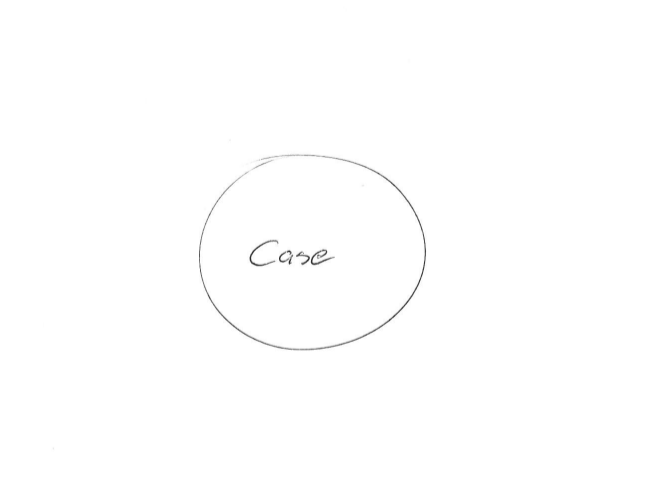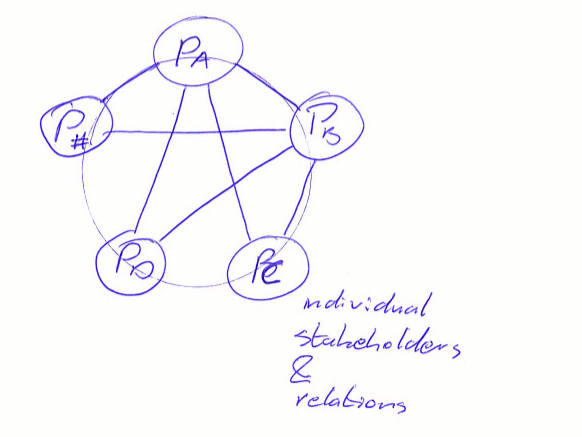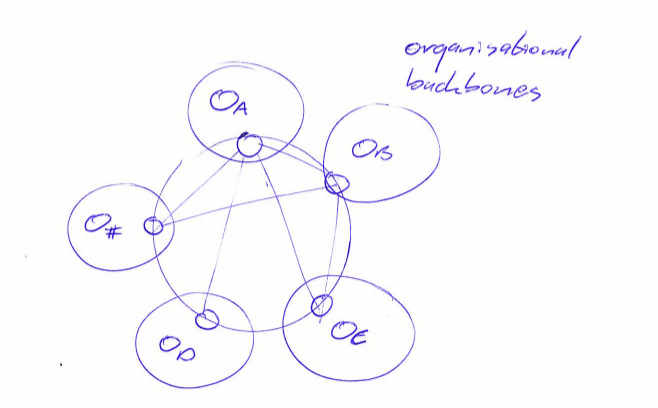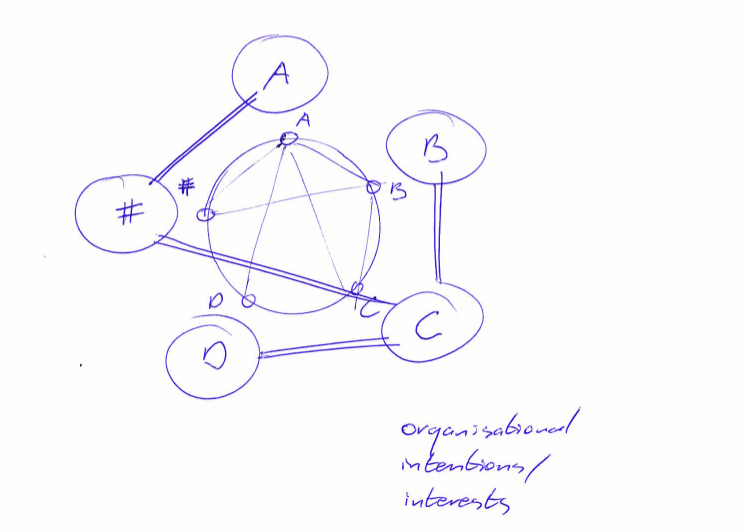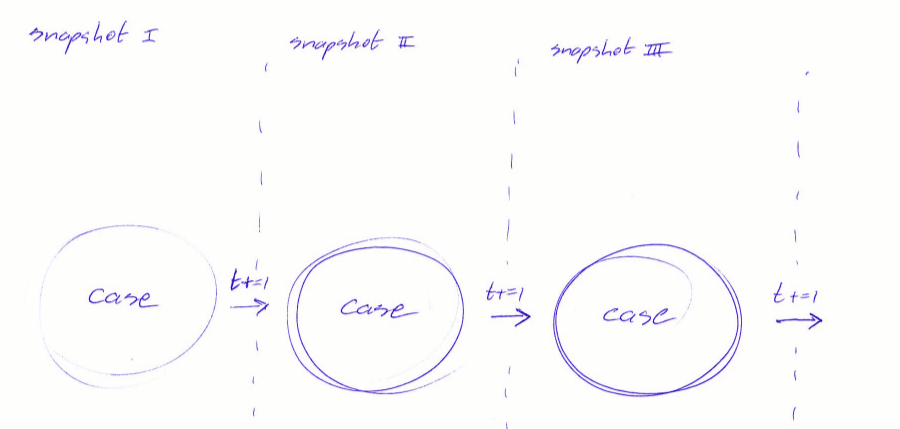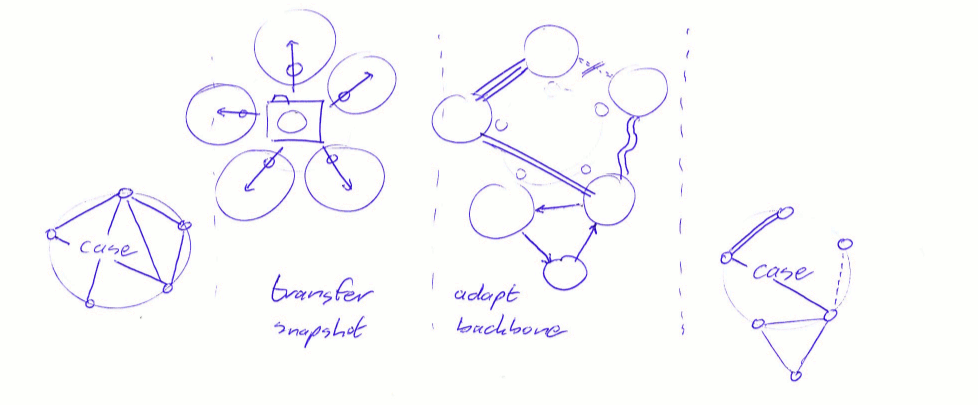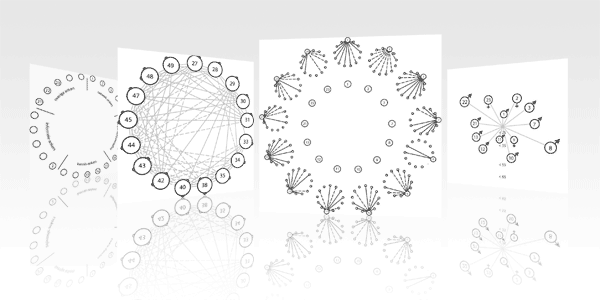With reference to Kadhamabari Sankaranarayanan, August, 2010 (link)
[!] Chapter 2.2 of this thesis about online communities describes two theories, originating from organizational science: “There are two theories of group attachments that have been linked to design decisions on online communities (Ren et al., 2007). They are the common identity theory and the common bond theory. The common identity theory makes predictions about the causes and consequences of people’s attachment to the group as a whole while the common bond theory makes predictions about the causes and consequences of people’s attachments to individual group members (Ren et al., 2007).”
|
Common Identity Theory (people’s attachments to the group as a whole)
|
- social categorization (Turner, 1985) (Turner et al., 1987)
- {cooperative} interdependence (Ren et al., 2007)
- intergroup comparison (Tu & Terry, 2000)
|
|
Common Bond Theory (people’s attachments to individual group members)
|
- social interaction (Cartwright & Zander, 1953)
- {exchange of} personal information (Collins & Miller, 1994)
- personal attraction through similarity (Ren et al., 2007)
|
[.] Chapter 2.3 describes a Theory of Reciprocation, originating from behavioral science: “In the case of common bond there is direct reciprocity, and in the case of a common identity there is general reciprocity. … Social psychologists have found that the urge to reciprocate is deeply ingrained (Cialdini, 2001). … Voting on web sites is sometimes done in the context of reciprocity (Dellaroca et al, 2004). … Networks of reciprocity are highly motivating, and encourage participants to maintain an awareness of the community that surrounds it (Sadlon et al, 2008). A community designed on the basis of common identity is said to be more stable when compared to a community designed on the basis of a common bond (Ren et al., 2007).”
[?] Does this mean that personal relations are more important for / more effective in group decision making than relations between groups, that is from a ‘group-as-a-whole perspective’ ?
[.] Sankaranarayanan continues: “According to Milgram (Milgram, 1997) and Zajonc (Zajonc, 1986), visually representing people in an online group help people form personal attachment to each other even without communicating with each other. Visualization of actual communication flow among community members can create bonds between friends of friends by helping people fill in gaps (Ren et al, 2007). Making contributions visible in a community as a whole leads to some extent of recognition of the member’s contributions. So visualizing reciprocal and non reciprocal relationships might help members to recognize their current position in the community.”
[?] Could we extrapolate and hypothesize that an ‘awareness of ones position in a group’ would make the group a better decision making unit as a whole?
[?] Would visualization of individual reciprocity make group decision making more effective?
[?] Would visualization of inter-group reciprocity make group decision making more effective?
[.] 2.5 Focusses on social visualization {as a tool for the ‘group-anthropologist’} : ” … Visually representing information enables users to see data in context, observe patterns and make comparisons (Heer et al, 2009). Visualization techniques are important aids in helping users and researchers understand social and conversation patterns in online interactions (Viegas et al, 2004). … Social visualization is defined as the visualization of social data for social purposes” (Karahalios & Viegas, 2006). Social visualization is a sub category of information visualization and focuses on people, groups, conversational patterns, interactions with each other and relationships with each other and with their community.”
[-] I wonder why the final intervention was choosen. I seams to suffer information overload (despite earlier notion of visual overload, a common side effect -as stated- due to a vast amount of related subjects).
[?] What workaround would visualization of reciprocity have to offer, when avoiding visual complexity?



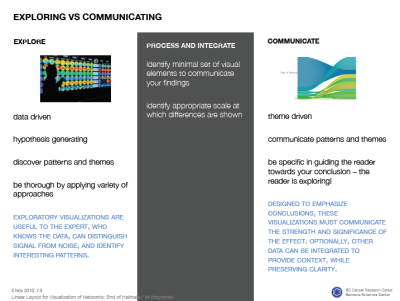 Screenshot slide 3. See more @
Screenshot slide 3. See more @ 
